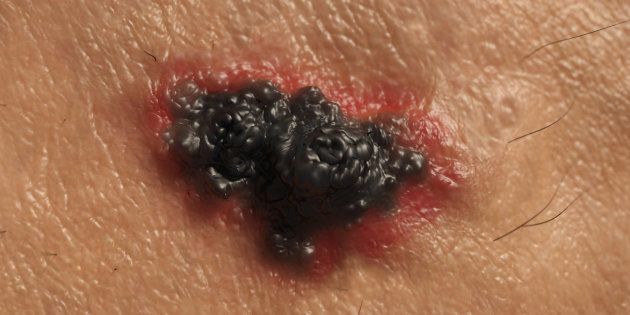
Tamar Klonarides was sitting in her lounge at her Johannesburg home one night in 2011, when she noticed that a mole on her leg she'd previously ignored had grown bigger. "There was something strange about how it looked," she told HuffPost.
A doctor's visit to have the mole checked confirmed that she had stage three malignant melanoma — the most serious form of skin cancer.
'There was something strange about how it looked.'
"I had not even had symptoms," she said.
What followed was treatment that she says impacted her life substantially. "I ran a large national company and it was extremely taxing to undergo treatment which left me feeling nauseous and exhausted. It was an exceptionally challenging time. My family was enormously supportive of me through this period, and they helped me to get through it."
In 2013, she went for a Positron Emission Tomography (PET) scan and the report came back clear. Life returned to normal.
"But then in 2015, I went for another test and it was discovered that the melanoma had spread to the lymph nodes in my groin. We were devastated. The psychological impact on us all was dreadful. The cancer had returned and was spreading; it needed to be treated swiftly to prevent it from reaching other areas of my body.
"It was almost impossible for me and my family to accept."
Her oncologist recommended a new treatment, immunotherapy, to treat the advanced disease. After several courses of treatment over the 2015, she was again found to be in the clear.
How to protect yourself
According to the South African Melanoma Advisory Board (Samab), melanomas develop in people who have a genetic predisposition, coupled with excessive, unprotected sun exposure. Some forms of melanoma have also been linked to overexposure to UV radiation, particularly sun binges and blistering sunburns in childhood.
It is therefore imperative to implement wise behaviour regarding the sun, such as:
- Avoiding direct, unprotected sun exposure;
- Seeking shade wherever possible;
- Covering up with sun-protective clothing, i.e. hat, long-sleeved shirt and trousers;
- Using a high-factor sunscreen on unprotected skin, i.e. face, arms, hands, etc.
A good sunscreen should have UVA and UVB protection and be tested by an accredited organisation like CANSA for safety and efficacy — the higher the SPF (and UVA protection), the better – if one uses too low and SPF, the efficacy drops dramatically. Any sunscreen should be reapplied frequently, as there is no such thing as day-long protection, notes Samab.
"I also encourage people to see their physician every year for a professional skin exam," said Klonarides.
Any sensation such as an itch, pain or bleeding is a cause for concern, and if any suspicious lesion is noted, a doctor should be consulted. Even today, 80 percent of all melanomas are first detected by the patients rather than doctors, notes Samab.
"And to people who have melanoma, please don't see it as the death sentence it once was. Also, don't Google – talk to an oncologist who is up to date with the latest treatments, and never be scared to go with the science."
